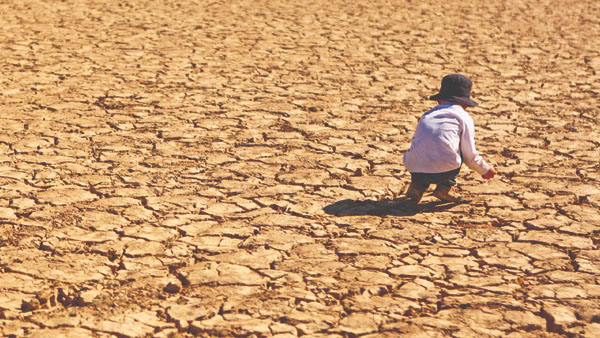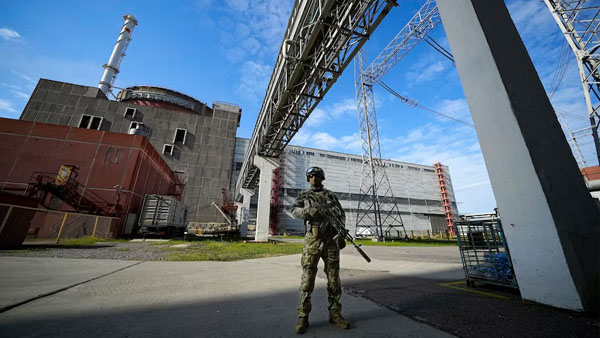By Dipak Kurmi
As the world prepares for the 30th Conference of Parties (CoP 30) in Belem, Brazil, scheduled from 10th to 21st November, the urgency of climate action has never been more palpable. The Indian Institute of Science (IISc) Bengaluru, in collaboration with the UN Global Compact, Karnataka Forest Department, and the Government of India’s Wood Science & Technology Institute, organized a crucial two-day deliberation on 14th and 15th October to crystallize India’s national priorities for this pivotal gathering. The discussions that unfolded revealed not merely technical challenges of climate mitigation and adaptation, but exposed the deepening chasm between developed and developing nations on fundamental questions of climate justice, historical responsibility, and equitable pathways toward a sustainable future.
The stark reality confronting humanity is that greenhouse gas emissions since industrialization commenced in 1870 have elevated planetary temperatures by 1.2 degrees Celsius, triggering a cascade of catastrophic consequences including droughts, altered monsoon patterns, retreating glaciers, devastating heatwaves, wildfires, flooding, landslides, cyclones, and typhoons that are systematically dismantling the lives and livelihoods of communities across diverse regions. The year 2024 has etched itself into history as recording the highest rise in average global temperature at 1.54 degrees Celsius, a grim milestone that underscores the accelerating nature of climate disruption. During the current monsoon season, Himalayan regions have witnessed unprecedented destruction from heavy downpours, flooding, and landslides, serving as visceral reminders that climate change is not a distant threat but an immediate reality.
The Pre-CoP 30 deliberations encompassed a comprehensive array of critical issues, from national adaptation plans addressing increasingly severe heatwaves to the impacts on communities as Himalayan glaciers retreat, the effects of greenhouse gas emissions on planetary and human health, forest and biodiversity conservation, the imperative for upscaling renewable and nuclear energy, and the perpetually contentious issue of climate finance. However, what emerged most powerfully from these discussions was a growing recognition that the architecture of international climate negotiations has systematically favored the interests of industrialized nations while placing disproportionate burdens on the Global South.
A particularly revealing aspect of the discussions centered on the Himalayas, a region that has experienced shifting narratives in successive CoP meetings. Earlier conferences had prominently featured alarming predictions that Himalayan glaciers would completely disappear by 2035, generating considerable international attention and concern. Once these studies were exposed as misleading and the actual pace of glacial retreat was found to be substantially slower, subsequent CoPs conspicuously omitted discussions on the Himalayas altogether. This pattern of shifting goalposts exemplifies how climate discourse can be manipulated to serve particular agendas rather than addressing genuine environmental challenges. The Pre-CoP 30 deliberations emphasized that the Himalayas must return to the center of climate conversations, particularly given that permafrost melting in the Tibetan region is occurring at an alarmingly rapid rate, causing significant shrinkage in extent and degrading stability with profound implications for local environments, hydrological systems, soil stability, and the potential release of vast quantities of stored carbon.
Dr. Meenakshi Negi, Head of Karnataka Forest Force, articulated a critical perspective in her inaugural address by advocating for the protection of forest resources and reducing community dependency on forests. She highlighted a fundamental paradox: as long as communities residing in and around forests remain dependent on these resources, genuine conservation remains an insurmountable challenge. The faulty implementation of the Forest Rights Act of 2006 has enabled forest land grabbing, directly undermining carbon sequestration potential. Forests represent one of the most effective and economical carbon sinks available, making deforestation particularly counterproductive to climate mitigation efforts. Globally, 391 million hectares of tropical forests, upon which 53 million people depend, face high deforestation risk. These forests, vital for carbon storage and ecosystem services, are under relentless pressure from agricultural expansion and development projects, making their protection essential for climate mitigation, water security, and avoiding catastrophic economic losses.
The deliberations exposed troubling discrepancies in India’s forest data. The Department of Statistics and Plan Implementation, Government of India, has erroneously concluded from Forest Survey of India’s biannual reports that India’s carbon sequestration potential has increased by 51 percent over ten years, findings unsupported by studies conducted by independent institutions. Multiple development projects including the Sharavathy Pump Storage Project, Hubballi-Ankola rail link, and various road widening initiatives threaten pristine forest areas. The Pre-CoP 30 discussions vehemently opposed diverting these forests for such development projects. Notably, while countries controlling 90 percent of global forests agreed at CoP 26 in Glasgow in 2021 to end deforestation by 2030, India did not sign this agreement, and signatory nations have never reviewed progress in subsequent CoP meetings, suggesting they face domestic pressures to prioritize GDP growth over forest conservation.
Dr. J. Srinivasan, former IISc Professor, illuminated the escalating challenges of heatwave mitigation. Carbon dioxide concentrations have risen relentlessly every year, with the singular exception of the COVID period. Sequential heatwaves of extended duration render elderly populations and children particularly vulnerable to mortality. Urban areas inhabited by wealthier populations benefit from surrounding tree groves and air-conditioned housing, while slums lack vegetation, creating deadly heat islands. In 2020, Ahmedabad experienced unprecedented heat-related deaths, with government-organized shelters providing crucial relief. Humid heatwaves present an even more formidable challenge, with temperatures exceeding 37 degrees Celsius combined with humidity above 50 percent creating conditions that many human bodies simply cannot withstand. Srikakulam once experienced such conditions, resulting in casualties among young children and infants.
The discussions also addressed the differential impacts of various greenhouse gases including carbon dioxide, nitrous oxide, methane, water vapor, and fluorinated gases. Methane emissions from cattle rearing and paddy cultivation have become a focal point of Western criticism directed at India. However, experts emphasized that carbon dioxide remains primarily responsible for warming, with methane’s contribution representing less than one percent of total emissions. Crucially, India’s methane emissions are negligible in global terms and result from survival activities rather than luxury consumption. Indian negotiators at CoP 30 must vigorously counter these Western narratives and resist pressure to curtail methane emissions that are essential for food security and livelihoods.
Climate finance emerged as perhaps the most contentious issue, having precipitated the failure of talks at CoP 29 in Baku. Ms. Chandani Raina, Senior Advisor at India’s Ministry of Finance, connected with Pre-CoP 30 delegates online to discuss financing developing countries for mitigation and adaptation. Developed countries committed during the 2009 Copenhagen CoP to provide $100 billion annually, yet have fulfilled merely 15 to 20 percent of this commitment since 2021. When the Global South demanded $1.3 trillion annually from 2025 at Baku, developed countries agreed to mobilize only $300 billion annually from 2026 onwards, effectively discontinuing the Copenhagen commitment. More insidiously, CoP 29 stipulated that 40 percent of this annual finance would require shareholding by developing countries and would be provided as loans rather than grants, creating a deliberate debt trap. The $1.3 trillion demand has been deferred to future negotiations, characterized as the journey “from Baku to Belem.” Furthermore, developed countries have subtly shifted from “committing” finance to merely “agreeing to mobilize” it, while simultaneously claiming that they have already provided developing countries with adequate carbon space for growth, leaving developing nations to confront climate disruptions while facing economic ruin.
A groundbreaking study presented by Chirag Dhara of Krea University, Chennai, conducted with four colleagues, introduced a novel analytical framework assessing the global mean surface warming that would have resulted if individual countries’ historical lifestyles had been universally adopted. Their findings revealed that universalizing the carbon-intensive lifestyles of industrialized nations would have breached the 1.5-degree threshold as early as the 1950s in some cases and by the 2000s for many others, risking catastrophic destabilization of Earth’s climate system. They concluded that the modest lifestyles of the global majority have substantially contributed to experienced planetary stability, providing a critical window for climate action extending from a decade to a century. This study furnishes developing countries with a powerful instrument to demand that developed nations immediately decarbonize their economies while enabling the Global South to utilize remaining carbon space for equitable development. As the world moves from Baku to Belem, these fundamental questions of justice, responsibility, and equity will determine whether CoP 30 represents genuine progress or merely another chapter in a narrative of broken promises and deferred action.
(the writer can be reached at dipakkurmiglpltd@gmail.com)




